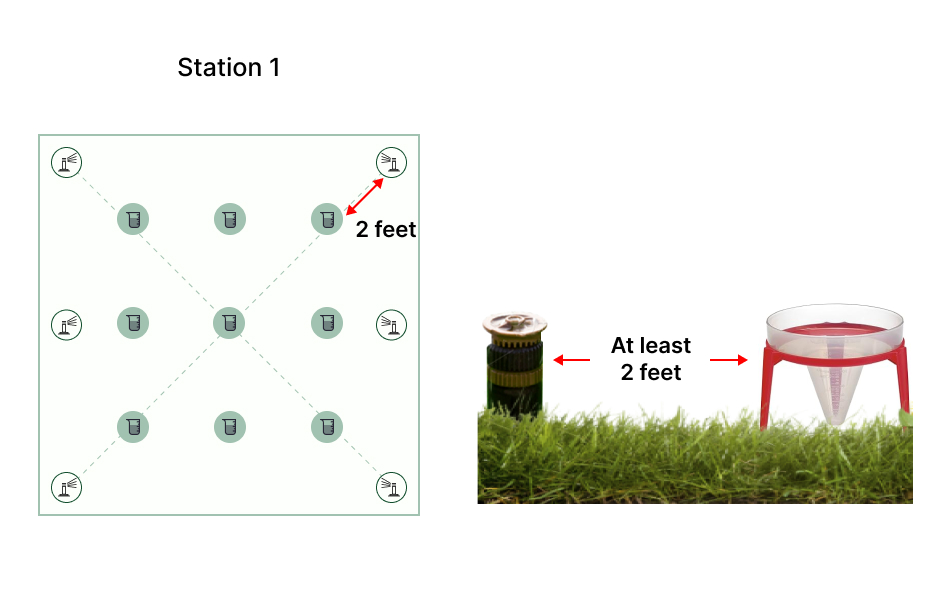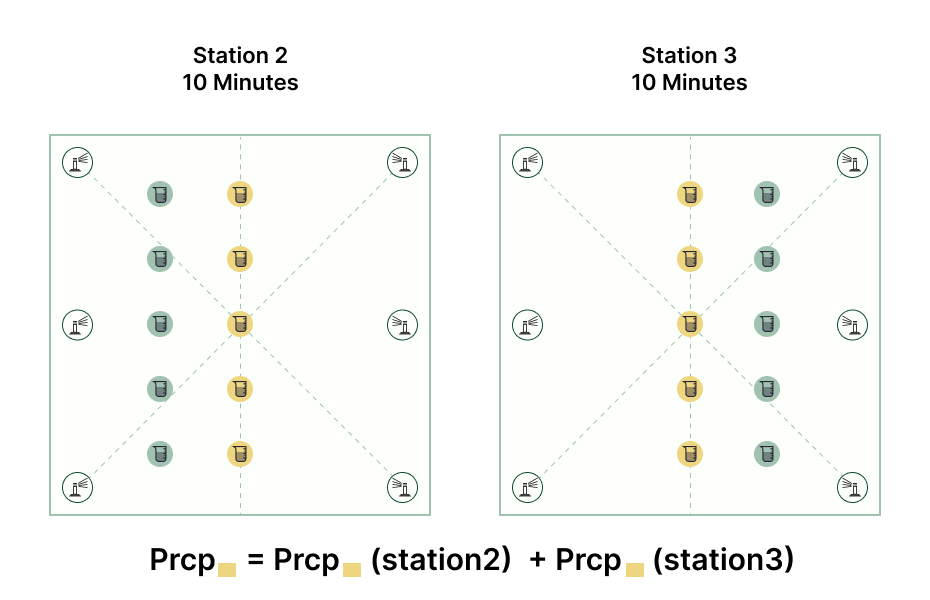Sprinkler manufacturers typically provide estimated efficiency values for different types of sprinklers. However, actual irrigation efficiency is influenced by various factors such as water pressure, pipe layout, and the spacing between sprinklers. But there's no need to worry; you can easily measure the actual efficiency of your system at home. Here are the detailed steps:
Preparation: First, ensure you have purchased 8 to 12 collection cups and choose a day with calm weather for accurate measurements.
Step 1: Check the Sprinkler Condition: Before you start the measurement, it's essential to check that all your sprinklers are in good working order. Ensure the sprinklers pop up and spray water without blockages or damage. If you find any issues, clean or replace the problematic sprinklers to ensure they function correctly.
Step 2: Arrange the Collection Cups: Proper placement of collection cups is crucial for accurate measurements. Place a collection cup around each sprinkler at a distance of 2 feet. Additionally, position cups in the middle between adjacent sprinklers, covering both lateral, longitudinal, and diagonal positions to ensure they capture the entire spray pattern.
To facilitate data recording, you can create a sketch or label the positions of each collection cup on paper. Next, turn on your irrigation system and run it for 10 to 15 minutes.

Step 3: Measure the Water Amount: After irrigation is completed, examine the water amount in each collection cup and record it at the corresponding location on your sketch or paper. This will help identify areas with uneven irrigation and any zones that might require adjustments to improve efficiency.
Step 4: Calculate Distribution Uniformity (DU): Use the following formula to calculate the actual efficiency of your sprinklers:
DU (%) = Average (Minimum Irrigation Amount) / Average (Irrigation Amount)
DU stands for Distribution Uniformity. Select two to three collection cups with the lowest water amounts and calculate their average, representing the Average (Minimum Irrigation Amount). If you have adjacent irrigation zones, be aware that there may be overlapping coverage in the border area.
When calculating the irrigation efficiency of two adjacent zones, run each zone separately and consider the total water amount from both irrigation cycles in the overlapping border area as the water collected in the collection cups.

This process allows you to gain a more detailed understanding of your sprinkler system's performance, identify areas with uneven irrigation, and make necessary adjustments to sprinklers or pipe layouts to ensure plants receive uniform water distribution. This helps conserve water resources and enhance irrigation efficiency.
If the above method still does not solve your problem, don't hesitate to get in touch with our technical support team directly through the following contact information. We will reply to you by email within 12h after receiving your message.
Email: Support@imolaza.com
